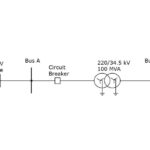
Southeast Asia’s (SE’s) electricity demand is rising at one of the fastest rates in the world, underscoring the need for countries to diversify energy supplies and reinforce grid infrastructure. A new IEA report released recently highlights how countries in the region can leverage their abundant renewable resources, notably wind and solar PV, to meet soaring demand and achieve their energy priorities.
Electricity demand in the region grew by more than 7% in 2024 – nearly double the global average – and is set to double again by 2050, driven by rapid urbanisation, industrial growth and rising living standards. Today, many member states of the Association of Southeast Asian Nations (ASEAN) depend heavily on imported fuels, which exposes the region to risks of fuel price volatility and supply disruptions, as seen during the recent global energy crisis. Meeting demand growth securely and affordably will require coordinated action from policymakers, regulators and utilities across the region, according to the report.
SE is particularly well placed to benefit from its renewable energy resources, the report finds. With an estimated 20 terawatts of untapped solar and wind potential – equivalent to around 55 times the region’s current total power capacity – even a fraction of this could meet future demand while strengthening energy security. Solar and wind are now among the most cost-competitive options for new electricity generation across Southeast Asia.



















